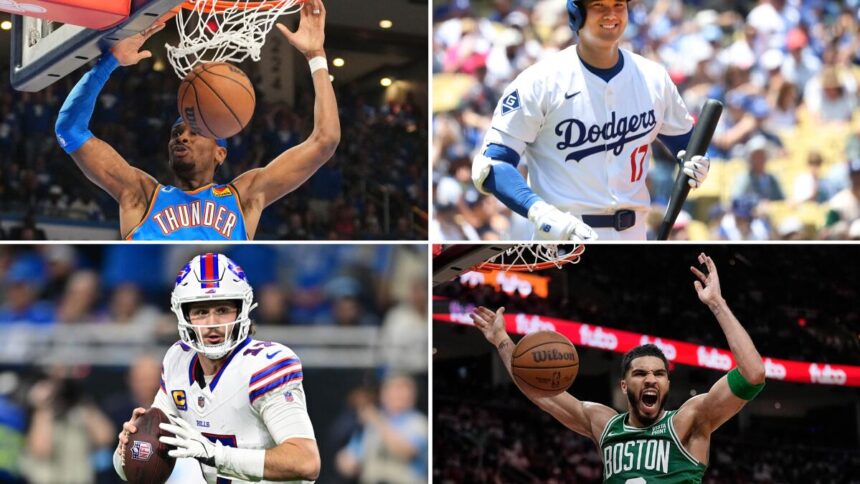The basketball world collectively gasped yesterday when news broke of Shai Gilgeous-Alexander’s historic contract extension with the Oklahoma City Thunder. The Canadian phenom inked a five-year, $304.5 million supermax deal that not only cements his place as the franchise cornerstone but also rewrites the NBA’s financial record books. As someone who has tracked the evolution of player contracts for years at CO24 Culture, I can’t help but marvel at how dramatically the landscape has shifted.
Just a decade ago, a $100 million contract was considered astronomical. Today, we’re witnessing the first $300 million deal in NBA history. Gilgeous-Alexander’s meteoric rise from promising draft pick to league MVP candidate parallels the explosive growth in player compensation that has defined this era of basketball.
The 25-year-old guard’s journey to this financial pinnacle wasn’t preordained. Selected 11th overall in the 2018 NBA Draft by the Charlotte Hornets before being immediately traded to the Los Angeles Clippers, SGA showed flashes of brilliance but wasn’t initially projected as a future supermax candidate. His inclusion in the blockbuster Paul George trade that sent him to Oklahoma City in 2019 would prove transformative for both player and franchise.
During his time with the Thunder, Gilgeous-Alexander has evolved from promising youngster to bona fide superstar. Last season’s performance—averaging 30.1 points, 6.2 assists, and 5.5 rebounds while shooting an efficient 53.5% from the field—placed him firmly in MVP conversations and justified Oklahoma City’s massive investment. The contract extension, which kicks in after the 2025-26 season, will keep him in Thunder blue through 2031.
What’s particularly fascinating about this deal is how it reflects broader trends in sports economics. The NBA’s exploding salary cap, fueled by lucrative television deals and expanding global reach, has created an environment where these once-unimaginable figures have become the new normal. The league’s revenue has more than doubled since 2010, and player salaries have increased proportionally.
For context, Gilgeous-Alexander’s deal dwarfs what previous generations of NBA legends earned throughout their entire careers. Michael Jordan’s career NBA earnings totaled approximately $94 million—less than what SGA will earn in two seasons under his new contract. Even accounting for inflation, the difference is staggering and speaks to the NBA’s remarkable financial growth.
The ripple effects of this contract will be felt league-wide. Young stars like Anthony Edwards, Tyrese Haliburton, and LaMelo Ball are undoubtedly taking notes as they approach their own extension eligibility. Teams, meanwhile, must reckon with the reality that retaining homegrown talent now requires financial commitments that would have been unthinkable even five years ago.
For small-market franchises like Oklahoma City, these mega-contracts represent both opportunity and risk. The Thunder’s willingness to invest so heavily in Gilgeous-Alexander signals their confidence not only in his individual talent but in their ability to build a championship-caliber team around him. With a treasure trove of draft picks and promising young players already in the fold, Oklahoma City is positioning itself as a potential dynasty in the making.
From a cultural perspective, what’s most interesting about the evolution of NBA contracts isn’t just the dollar figures, but what they represent: a dramatic shift in power dynamics between players and ownership. In an opinion piece I wrote last year, I noted how today’s NBA stars have leveraged their immense cultural capital into unprecedented financial and professional autonomy. Gilgeous-Alexander’s deal is the latest example of this paradigm shift.
As we process the magnitude of this contract, it’s worth considering what might come next. Will we see the first $400 million deal before the decade ends? How will these escalating salaries affect team-building strategies and competitive balance? And what does it mean for the future of the sport when individual players command such enormous portions of a team’s financial resources?
What’s certain is that Shai Gilgeous-Alexander’s record-breaking contract represents more than just one player’s payday—it’s a milestone in the ongoing evolution of professional basketball as both sport and business. For Thunder fans, the message is clear: their soft-spoken Canadian star will be the face of the franchise for years to come. For the rest of us, it’s another fascinating chapter in the NBA’s remarkable economic story.











